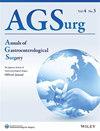Short-term and long-term outcomes of self-expandable metallic stent placement versus creation of a diverting stoma for obstructive colorectal cancer: A systematic review and meta-analysis
Abstract
Aim
A diverting stoma (DS) is often used as a bridge to surgery in patients with obstructive colorectal cancer (OCRC). However, the self-expandable metallic stent (SEMS) has emerged as a less invasive option. This systematic review and meta-analysis compared the efficacy and safety of the SEMS with that of a DS for OCRC.
Methods
An electronic literature search through to May 2024 was performed to identify studies that compared the SEMS and DS as a bridge to surgery in patients with OCRC. The primary outcomes were postoperative complications and mortality. Secondary outcomes included clinical success of decompression, surgical site infection, anastomotic leakage, bleeding, permanent stoma creation, locoregional recurrence, and 3-year overall survival. The data were pooled using a random-effects model. The results are presented as odds ratios (ORs) with 95% confidence intervals (CIs).
Results
Five non-randomized studies that included 977 patients (SEMS, n = 427; DS, n = 550) were included. Postoperative complications (OR 0.78, 95% CI 0.60–1.01, p = 0.06) and mortality (OR 1.15, 95% CI 0.61–2.16, p = 0.67) were comparable between the groups. SEMS placement had a significantly lower clinical success of decompression but reduced the risk of surgical site infection (OR 0.45, 95% CI 0.27–0.77, p = 0.003). There was no significant between-group difference in frequency of anastomotic leakage (p = 0.68), bleeding (p = 0.94), permanent stoma formation (p = 0.95), locoregional recurrence (p = 0.31), or 3-year overall survival (p = 0.98).
Conclusion
Although clinical success was inferior to DS, SEMS contributed to comparable outcomes including postoperative complications, mortality, and long-term outcomes, but significantly reduced SSI. These findings support the broader adoption of SEMS in clinical practice, particularly requiring minimized invasiveness and improving patient quality of life are prioritized.


 求助内容:
求助内容: 应助结果提醒方式:
应助结果提醒方式:


